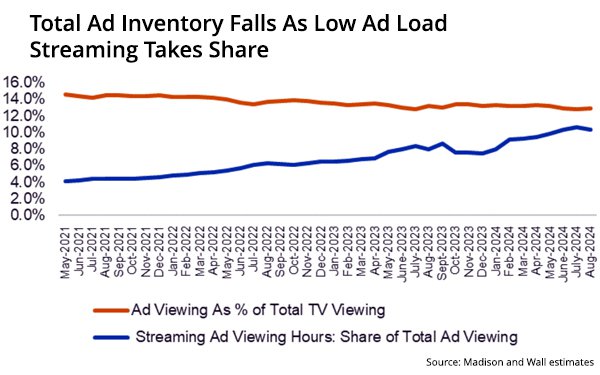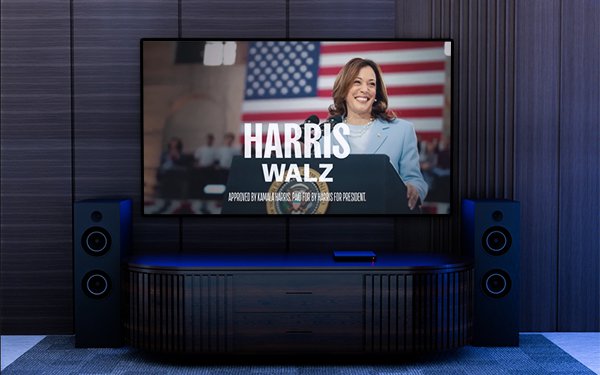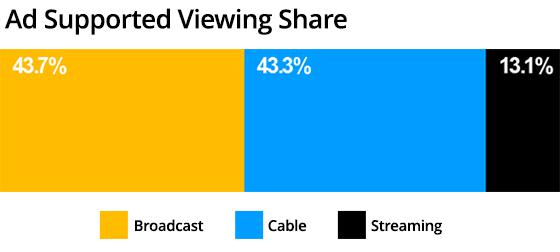
Automakers estimated TV spending was up 18.3% year over year for the third quarter.
The number rose to $541.2 million compared to $457.3 million in the same quarter in 2023. Year-to-date spending was flat at $1.7 billion compared to the same period in 2023, according to iSpot.tv.
Household TV ad impressions were down 14.3% year-over-year to 73.9 billion compared to 86.2 billion in the same period last year. Year-to-date impressions were down 12.7% year-over-year, 210.2 billion compared to 240.9 billion
The top five brands by estimated national TV ad spending for the quarter were Toyota ($61 million), Hyundai ($43.5 million), Chevrolet ($39.5 million), Honda ($38.7 million) and Ram Trucks ($32.7 million), according to iSpot.tv.
The NFL accounted for 42% of the industry’s total outlay for the quarter, and it was No. 1 for spend for all of the top five automakers, especially Honda, which allocated 72% of its Q3 budget to games.
“Sports were an even bigger part of automaker advertising than normal in Q3, thanks to the excitement around the Summer Olympics in Paris,” said Stuart Schwartzapfel, EVP, media partnerships at iSpot. “But along with big-ticket sports ad placements, these brands are still finding ways to reach consumers during syndicated and daytime shows, plus streaming programming as well to both move remaining 2024 inventory and promote 2025 vehicles.”
While all of the top five brands activated around college football, Ram Trucks and Honda leaned in the most: College football ranked second and third, respectively, for their total quarterly spend. Additionally, four of the top five brands invested in the 2024 Paris Olympics (Ram Trucks was the outlier), according to iSpot.tv.
The top five brands by share of automaker household TV ad impressions for the third quarter were Toyota (11.86%), Hyundai (8.56%), Nissan (6.64%), Lexus (6.55%) and Ford (6.16%).
The top five brands by share of voice on streaming for the quarter were Ram Trucks (10.63%), Toyota (9.28%), Jeep (9.26%), Hyundai (8.83%) and Nissan (6.01%).
Stellantis-owned brands including Ram Trucks and Jeep put a greater emphasis on streaming over national linear from a reach Share of Voice standpoint in the third quarter. The brands were No. 1 and No. 3 by share of streaming reach, despite being outside the top five by national linear TV ad reach (where they ranked No. 9 and No. 12, respectively), according to iSpot.tv.
The top programs for automakers by share of household TV ad impressions were NFL (7.57%), 2024 Paris Olympics (5.76%), College Football (5.67%), MLB (4.64%) and Primetime in Paris: The Olympics (3.57%).
Outside of sports, shows with some of the biggest year-over-year increases in automaker impressions included "My Lottery Dream Home” (+67% vs Q3 2023), “Modern Family” (+52%) and “America's Morning Headquarters” (+46%).
The top networks for automakers by share of household TV ad impressions in third quarter were NBC (16.93%), ABC (5.53%), CBS (5.51%), Fox (5.18%) and ESPN (4.15%), according to iSpot.tv.
NBC was the top TV network for automaker impressions in Q3, largely thanks to the Olympics and NFL/college football games. And it was the only network in the top five that saw an increase in industry impressions (+82%) vs Q3 2023. Other networks that saw increased reach year-over-year included UniMas (+33%), VH1 (+30%) and NewsNation (+25%).
The most-seen automaker ads by share of household TV ad impressions for the quarter was Hyundai: Summer: Add More Joy (3.88%), Jeep: Make the Most (2.22%), Volkswagen: Hot Dog (1.78%), Chevrolet: For Summer Adventures (1.70%) and Infiniti: Once Upon a Time (1.67%).
Top automaker ads by likeability among the top 20 most-seen ads were Volkswagen: An American Love Story (+15.5% more likeable than the Q3 automotive norm), Ram Trucks: The Calling: Sparks (+8.4%), Genesis: Feel Every Detail (+8.3%), Lexus: Free (+6.3%) and Nissan: The Ultimate Connection (+5.3%), according to iSpot.tv.
As part of iSpot's creative assessment survey, likeability measures an ad's ability to appeal to viewers, based on results from the survey prompt “I like this ad.” Positive Purchase Intent is the share of creative assessment survey respondents that indicated they were "more" or "much more" likely to purchase a product or service after seeing an ad.
The top automaker ads by positive purchase intent among the top 20 most-seen ads wer Genesis: Feel Every Detail (62% positive purchase intent), GMC: The Time Has Come (55%), Mercedes-Benz: Make Your Dreams Come True (52%), Genesis: Illuminated (52%) and Ram Trucks: The Calling: Sparks (51%). according to iSpot.tv.
Genesis’ “Feel Every Detail” was a third quarter winner, ranking third by likability and first for positive purchase intent. The ad eschewed typical automaker ad formats (that often rely on voice overs or on-screen text to hype models and various features), and instead focused on sleek visuals and an upbeat soundtrack to engage audiences successfully: 32% of surveyed viewers cited the visual scenes as the “single best thing” about the ad, while 13% favored the music above all else.















